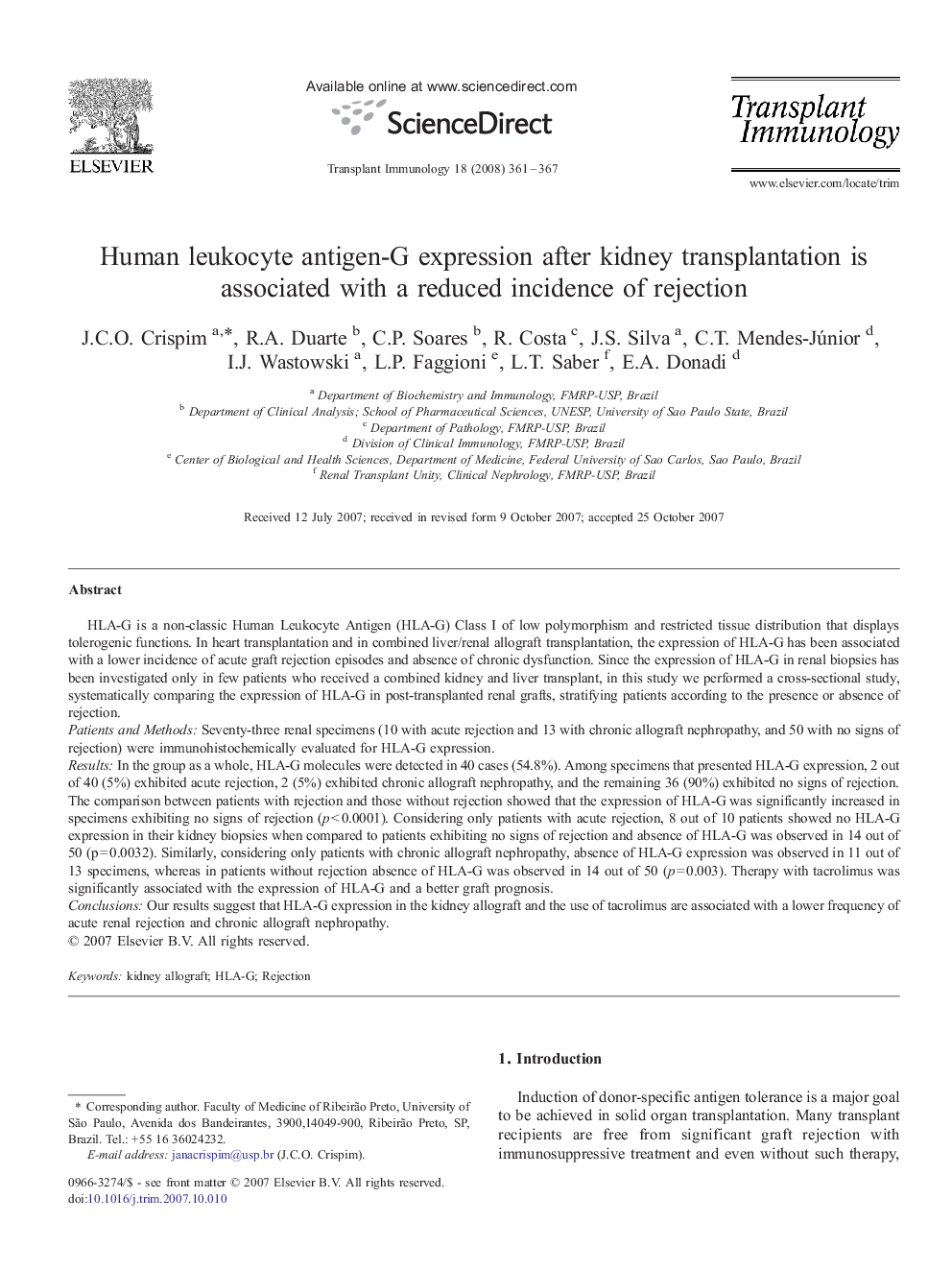| Article ID | Journal | Published Year | Pages | File Type |
|---|---|---|---|---|
| 3392624 | Transplant Immunology | 2008 | 7 Pages |
HLA-G is a non-classic Human Leukocyte Antigen (HLA-G) Class I of low polymorphism and restricted tissue distribution that displays tolerogenic functions. In heart transplantation and in combined liver/renal allograft transplantation, the expression of HLA-G has been associated with a lower incidence of acute graft rejection episodes and absence of chronic dysfunction. Since the expression of HLA-G in renal biopsies has been investigated only in few patients who received a combined kidney and liver transplant, in this study we performed a cross-sectional study, systematically comparing the expression of HLA-G in post-transplanted renal grafts, stratifying patients according to the presence or absence of rejection.Patients and MethodsSeventy-three renal specimens (10 with acute rejection and 13 with chronic allograft nephropathy, and 50 with no signs of rejection) were immunohistochemically evaluated for HLA-G expression.ResultsIn the group as a whole, HLA-G molecules were detected in 40 cases (54.8%). Among specimens that presented HLA-G expression, 2 out of 40 (5%) exhibited acute rejection, 2 (5%) exhibited chronic allograft nephropathy, and the remaining 36 (90%) exhibited no signs of rejection. The comparison between patients with rejection and those without rejection showed that the expression of HLA-G was significantly increased in specimens exhibiting no signs of rejection (p < 0.0001). Considering only patients with acute rejection, 8 out of 10 patients showed no HLA-G expression in their kidney biopsies when compared to patients exhibiting no signs of rejection and absence of HLA-G was observed in 14 out of 50 (p = 0.0032). Similarly, considering only patients with chronic allograft nephropathy, absence of HLA-G expression was observed in 11 out of 13 specimens, whereas in patients without rejection absence of HLA-G was observed in 14 out of 50 (p = 0.003). Therapy with tacrolimus was significantly associated with the expression of HLA-G and a better graft prognosis.ConclusionsOur results suggest that HLA-G expression in the kidney allograft and the use of tacrolimus are associated with a lower frequency of acute renal rejection and chronic allograft nephropathy.
